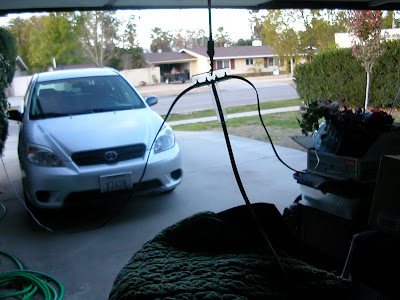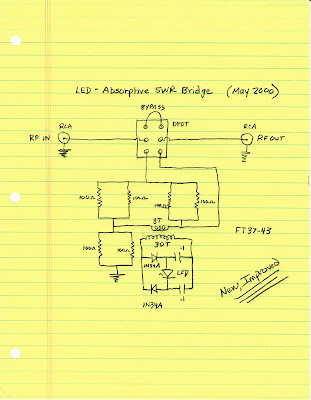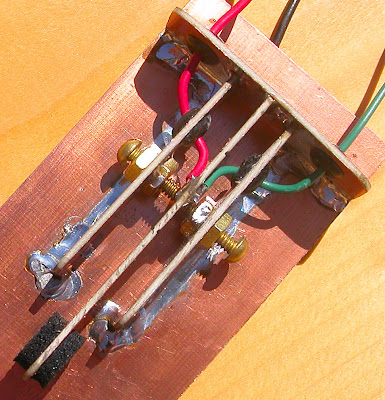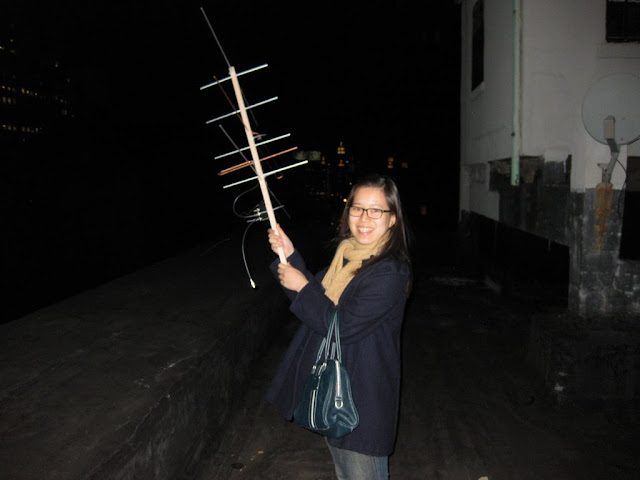I was quite interested to read the article on the “Loose-Wire Double Radiator 300 ohm
Twinlead 2-meter J-Pole antenna” in the January issue of WRO.
From what I understand, this is a modification of a J-Pole, modeled by the late L.B. Cebik,
taking into account the unconnected “loose wire” opposite the normal ½ wave radiator.
This design is also based on what Cebik calls “a non-standard” J-Pole design, where the ½ wave element is made shorter than a “normal” ½ wavelength, and the ¼ wave matching section is made longer than a “normal” ¼ wavelength.
What concerned me, however, was that the build dimensions published for the J-pole construction, appear to be those taken from what Cebik calls his "...bare-wire proof of
principle model”.
Note especially this term “bare-wire”, which clearly could not apply to anything made
from 300-ohm plastic insulated twinlead. Cebik also repeats several times throughout
his text, his reference to his "...bare-wire proof of principle model”.
Cebik points out that there are many varieties and shapes of flat, insulated, twinlead,
making modeling with antenna design software like NEC-4 a challenge, so he states
that "Therefore, models of twinlead must begin with bare-wire versions, with the caution
that the dimensions that emerge may not be close to the dimensions demanded by
vinyl-covered twinlead."
In other words, Cebik does not expect his "...bare-wire proof of principle model” to be
built as-is, without substantially modifying the theoretical dimensions, to account for the
effect of both wire insulation and most importantly the velocity factor of the particular
twinlead used.
I still can’t quite believe that many hams could have built up J-Poles using these
dimensions, without finding performance issues. Also strangely, in all the positive
reports that WRO mentions, no one seems to have actually measured SWR! I keep
looking for some other rational explanation, but it still looks to be related to misinterpretation
of Cebik’s “bare-wire proof of principle model”.
In order confirm this to myself, I have built a J-Pole as close as possible to the
information provided in the WRO January 2011 issue. Although I could not obtain any of
the pictured semi-clear TV twinlead, (no longer available) I doubt that it would have
made any difference.
The Twinlead I used was Radio Shack # 15-1174, with a published velocity factor (Vf) of
0.733. (in my testing I measured the actual Vf on a sample as 0.77)
To sum up, my findings were that for the J-Pole sample I built from the published
dimensions, the swr performance is extremely poor. The SWR was high across the
band from 144 - 149 MHz (9.2 – 4.5) and was not resonant anywhere.
Frankly, I would not want to use this antenna on any radio of mine.
Details of my results are given in the table that follows the text.
You will see that I tried to modify some of the published dimensions by adjusting some
of them for Vf, and obtained at least some improvements over the original test results.
These “experiments” are highlighted in the table.
In the end, it proved a larger task than I was prepared to continue, to come up with a
final set of dimensions that would yield a resonant low-SWR design from Cebik’s model.
I have included the dimensions below only to illustrate what I had done.
For comparison purposes, I also measured using the same set-up, a “conventional”
twinlead J-Pole I made some years ago based up a design published in the 1994
September QST issue.
This J-Pole clearly outperforms the WRO J-Pole under discussion.
There are many references in the literature illustrating practical dimensions for similar
“conventional” or standard twin-lead J-Poles.
I have listed some below:
“The DBJ-2: A Portable VHF-UHF Roll-Up J-pole…”, QST March 2007
“More on the Ribbon J-Pole Antenna”, QST June 2003
“The DBJ-1: A VHF-UHF Dual Band J-Pole”, QST February 2003
“The Twin-lead J-Pole” by WB3GCK, 1998
“An Easy Dual Band VHF-UHF Antenna”, QST September 1994
“144-148 MHz PVC Water Pipe J-Pole antenna”, K5LN, 6/22/97
“The 300-ohm Ribbon J Antenna for 2 meters; A Critical Analysis”, April 1982
Sincerely,
Don Dorward, VA3DDN


















































